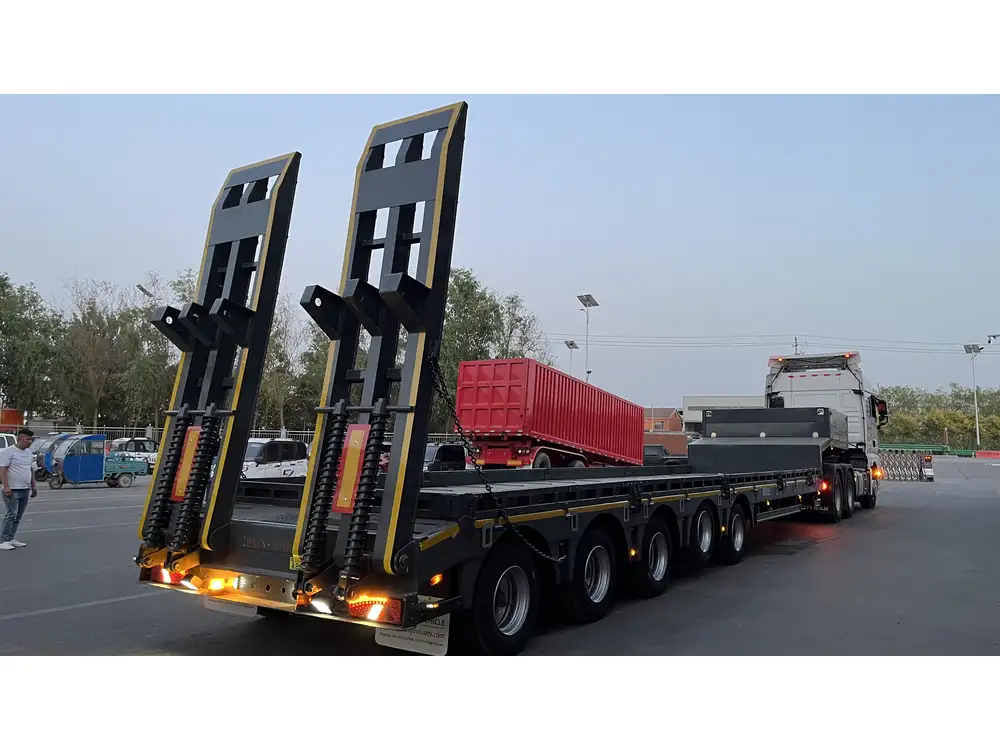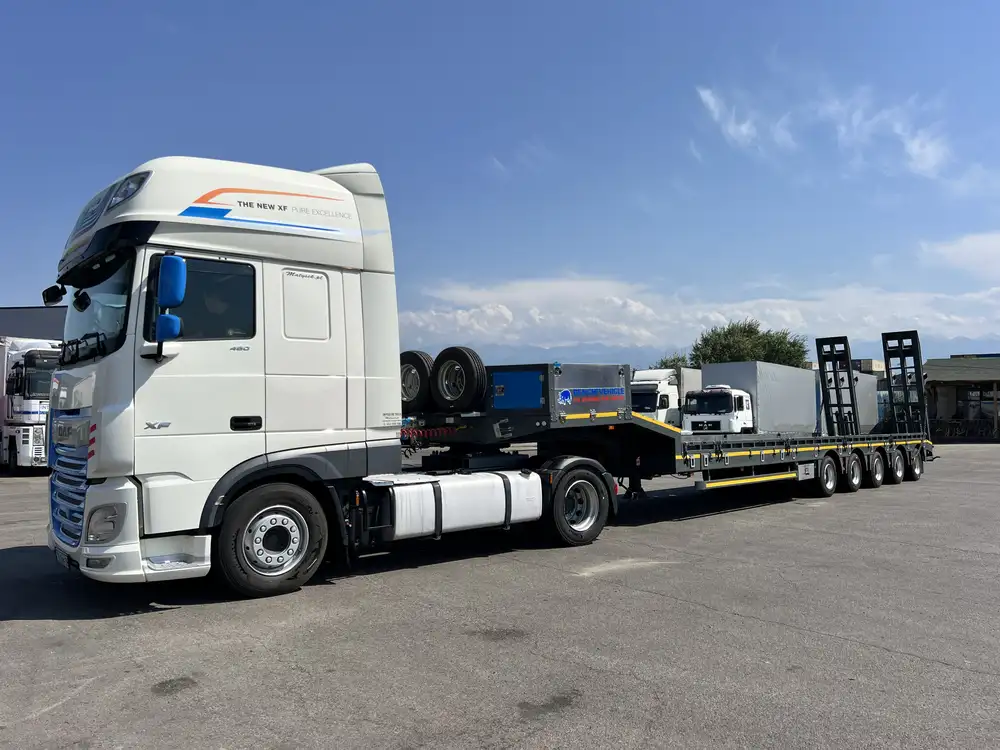When delving into the logistics and transportation industry, understanding the dimensions of 18-wheeler trailers becomes paramount. The length of these trailers is not just a number; it carries significant implications for shipping regulations, route planning, and overall logistics management. In this detailed exploration, we will unravel every facet of 18-wheeler trailer lengths, their classifications, and the laws governing them.
1. What is an 18-Wheeler Trailer?
An 18-wheeler is a colloquial term used in the United States to describe a combination of a semi-truck and its trailer. The term arises from the total of 18 wheels that these vehicles commonly possess: 10 on the truck and 8 on the trailer. These powerful trucks are a crucial component of the freight industry, transporting a vast amount of goods across the country.
1.1 Semi-Trailer vs. Full Trailer
To understand 18-wheeler trailers, it’s essential to differentiate between a semi-trailer and a full trailer:
| Type | Description | Wheel Configuration |
|---|---|---|
| Semi-Trailer | Towed by a truck and supported by the truck’s chassis | Typically 5-8 wheels on the trailer |
| Full Trailer | Has its own front axle and does not depend on the tractor for support | Usually 8-10 wheels |

1.2 Common Types of 18-Wheeler Trailers
- Dry Van Trailers: Enclosed and equipped to protect cargo from weather.
- Reefer Trailers: Refrigerated for transporting perishable goods.
- Flatbed Trailers: Open design without sides or a roof, ideal for heavy or oversized cargo.
- Tank Trailers: Designed for transporting liquids, featuring specialized tanks.
2. Standard Lengths of 18-Wheeler Trailers
The lengths of 18-wheeler trailers can vary based on their use and design. The industry typically recognizes the following dimensions:
| Trailer Type | Standard Lengths |
|---|---|
| Standard Dry Van | 48 to 53 feet |
| Reefer Trailers | 48 to 53 feet |
| Flatbed Trailers | 48 to 53 feet |
| Specialized Trailers | Up to 60 feet |
| Extendable Flatbeds | Can extend up to 82 feet |
2.1 The Impact of Length on Operations
The trailer’s length significantly affects both operational capabilities and compliance with regulations. Longer trailers might have increased cargo capacity but also necessitate more rigorous route planning due to:
- Weight Limitations: Longer trailers often mean heavier loads, which must comply with federal weight regulations.
- Maneuverability: Longer trailers can be more challenging to navigate through tight locations.

3. Legal Regulations Surrounding Trailer Lengths
In the United States, the maximum allowable length of an 18-wheeler trailer varies by state and is governed by federal regulations. Most states adhere to federal guidelines set by the Federal Highway Administration (FHWA), which provides a framework for size, weight, and load limits.
3.1 Federal Regulations
- Interstate Commerce: Typically allows for a maximum length of 53 feet for trailers in interstate commerce.
- State Regulations: Vary significantly; certain states allow for longer trailers, especially for specific types of loads (e.g., agricultural equipment).
3.2 Special Circumstances and Permits
For trailers exceeding standard lengths or weight limits, special permits may be required. This includes:
- Oversize Load Permits: Necessary for any load exceeding standard legal dimensions.
- Route Surveys: Conducted to determine safe passage through particular roadways and areas.

4. Factors Influencing Trailer Length Decisions
When selecting the appropriate trailer length for transport operations, managers must consider several factors:
4.1 Type of Cargo
- Bulk goods often fit better in longer trailers.
- Perishable items may require specific trailer types (e.g., reefer) regardless of length.
4.2 Route Characteristics
The intended route can influence trailer choice:
- Urban areas with tight corners may necessitate shorter trailers.
- Open highways may allow for longer trailers to max out capacity.

4.3 Fuel Efficiency
Longer trailers can impact fuel efficiency in various ways, necessitating calculations to analyze operational costs:
| Factor | Longer Trailers | Shorter Trailers |
|---|---|---|
| Aerodynamics | Increased drag can lead to higher fuel consumption | Improved fuel efficiency due to lesser wind resistance |
| Weight Distribution | Heavier loads may affect handling and fuel usage | Typically lighter, potentially better mileage |
| Cargo Optimization | More cargo space, but leads to potential weight issues | Smaller loads but better weight management |
5. Visualizing Trailer Lengths
To provide further clarity on the lengths and types of 18-wheeler trailers, below are visual comparisons of common trailer lengths.
5.1 Diagram of Common Trailer Types
+---------------------------+
| Truck | 10 Wheels
| |
| +--------------+|
| 48-53 Feet / ||
| Trailer / ||
| / ||
| /----------/|
| Flatbed | 47’ Trailer |
+---------------------------+
5.2 Comparison Table
| Trailer Type | Length Range | Suitable Cargo |
|---|---|---|
| Dry Van | 48-53 feet | General freight |
| Reefer | 48-53 feet | Perishable goods |
| Flatbed | 48-53 feet | Heavy machinery |
| Special/Extendable | Up to 60-82 feet | Over-dimensional loads |
6. Best Practices for Selecting the Right Trailer Length
To maximize efficiency and compliance, operators must engage in best practices when selecting trailer lengths.
6.1 Assessing Cargo Needs
Prioritize understanding the nature and dimensions of the cargo. Consider:
- Volume and weight.
- Special requirements (e.g., temperature control).

6.2 Regulatory Compliance
Always stay updated on state and federal regulations that might affect trailer selection and operational planning.
6.3 Route Analysis
Utilize mapping tools to analyze the intended route, focusing on:
- Road restrictions.
- Turn radii required depending on the trailer length.
7. Conclusion
In conclusion, the length of 18-wheeler trailers is not merely a numerical specification; it’s a foundational element that impacts the entire logistics process. Understanding the specific trailer types, their dimensions, and the legal regulations governing them is essential for manufacturers, operators, and anyone involved in freight transport. By considering cargo type, route characteristics, and regulatory compliance, we can make informed decisions that optimize logistics operations. Anyone looking to navigate this complex landscape will find that clarity around trailer lengths is vital for success in the ever-evolving transportation industry.



